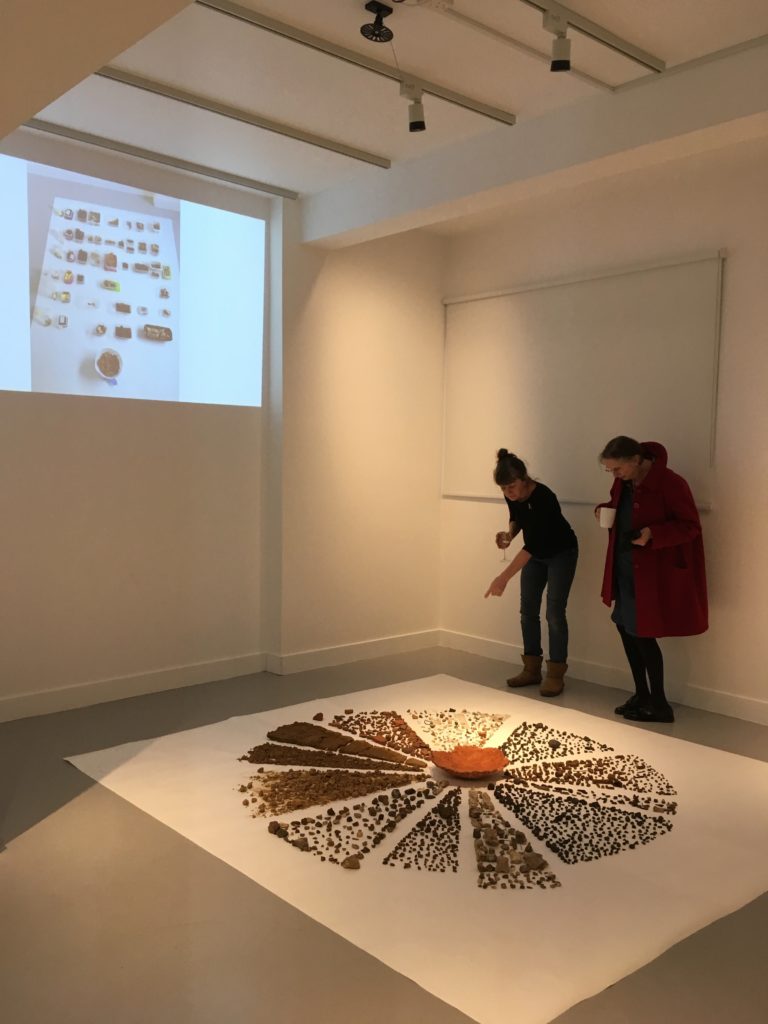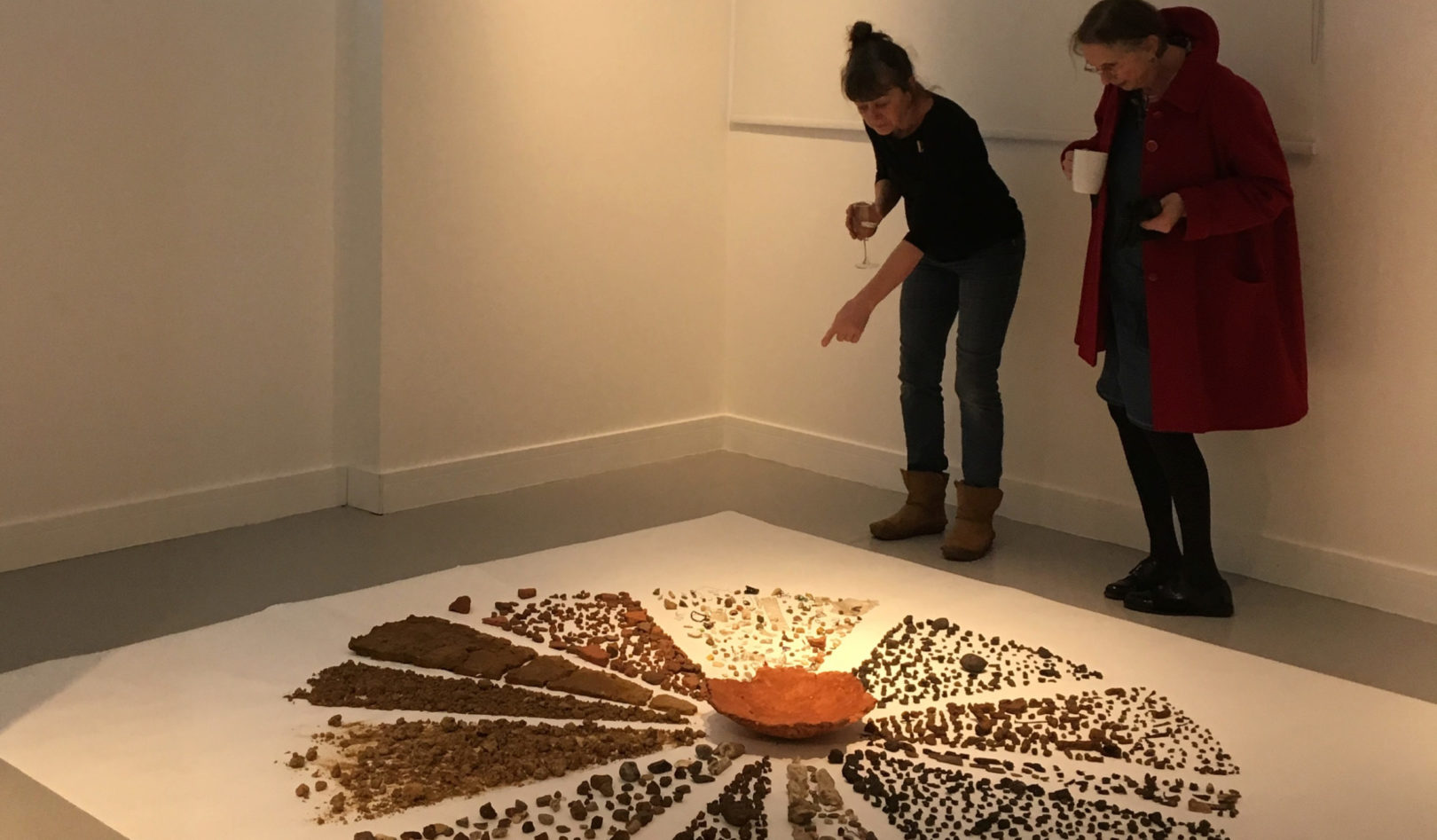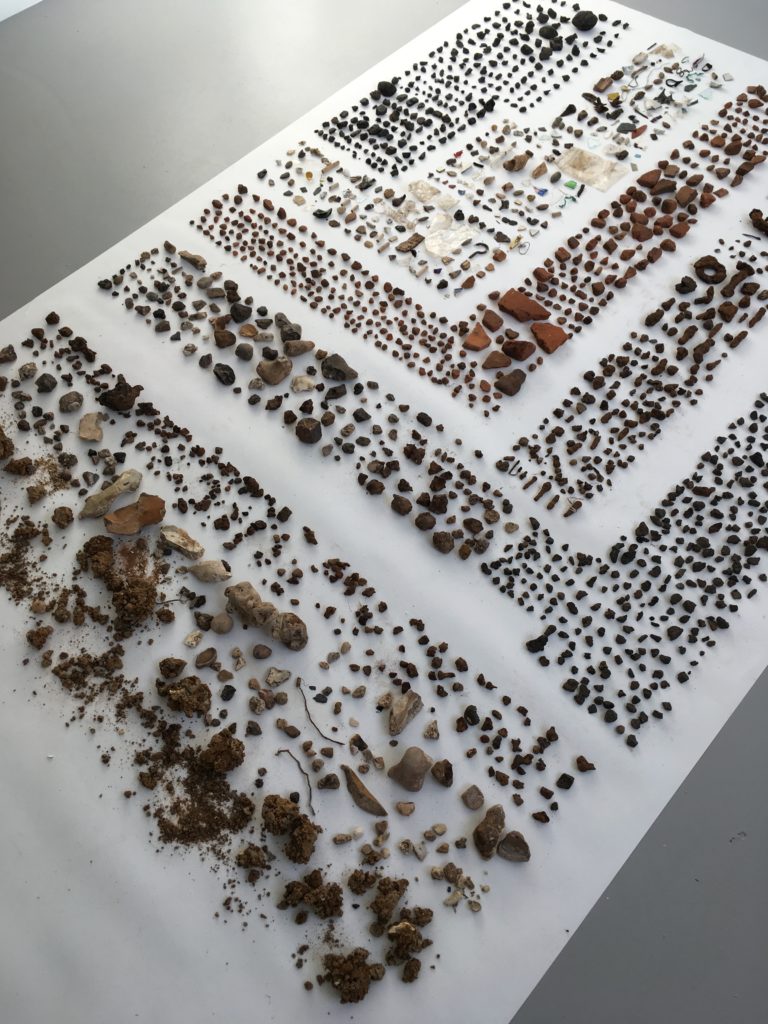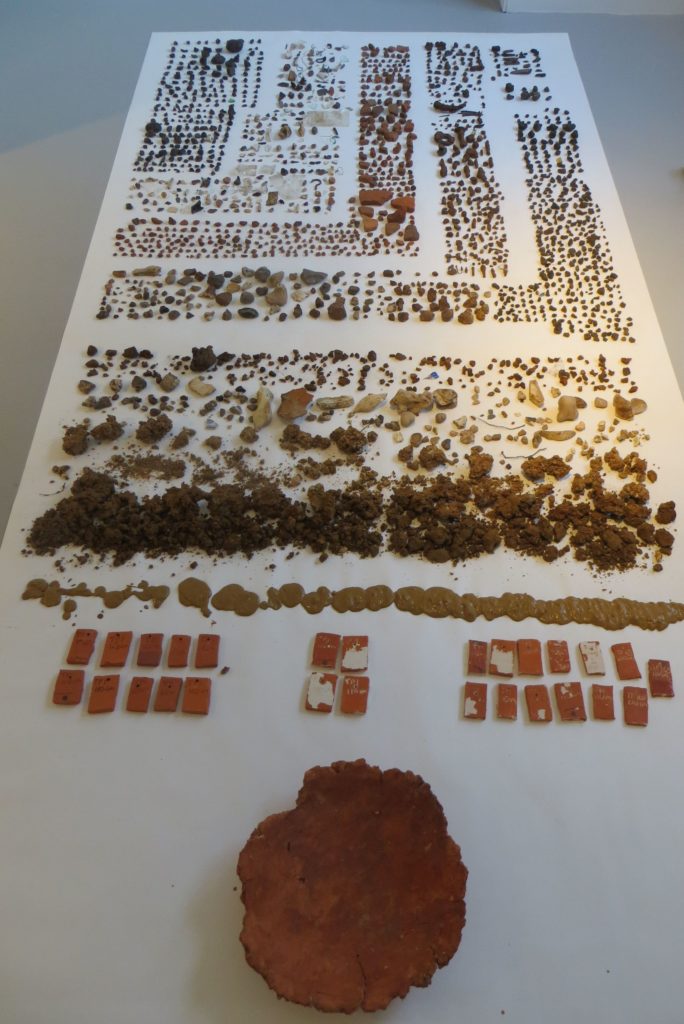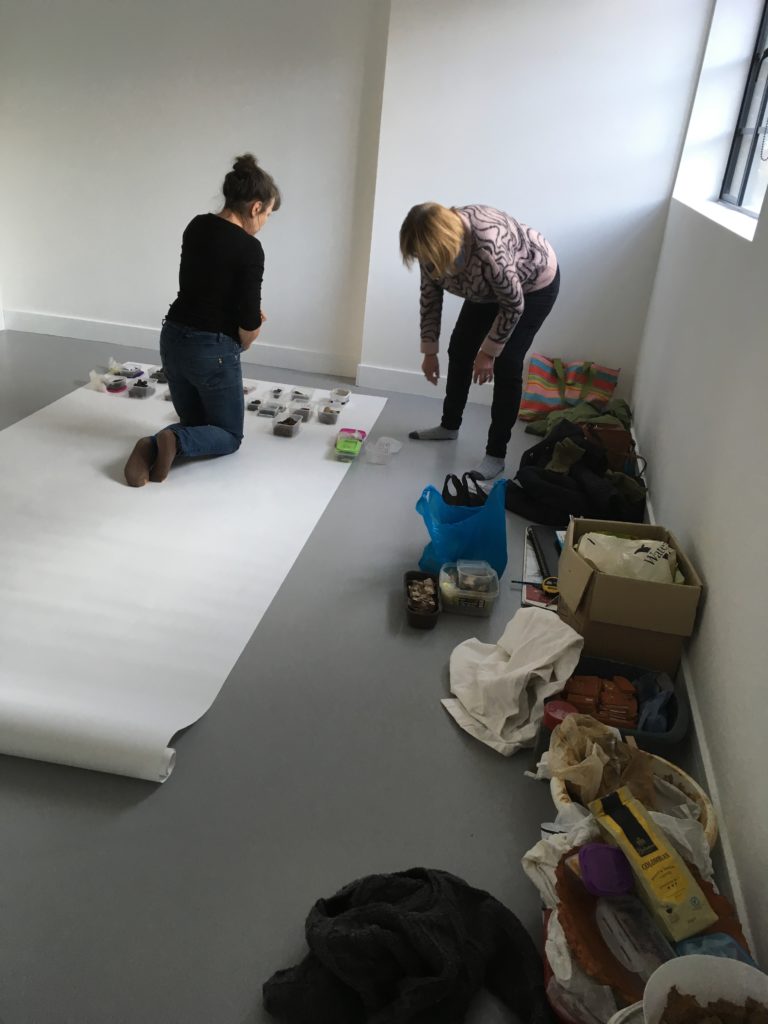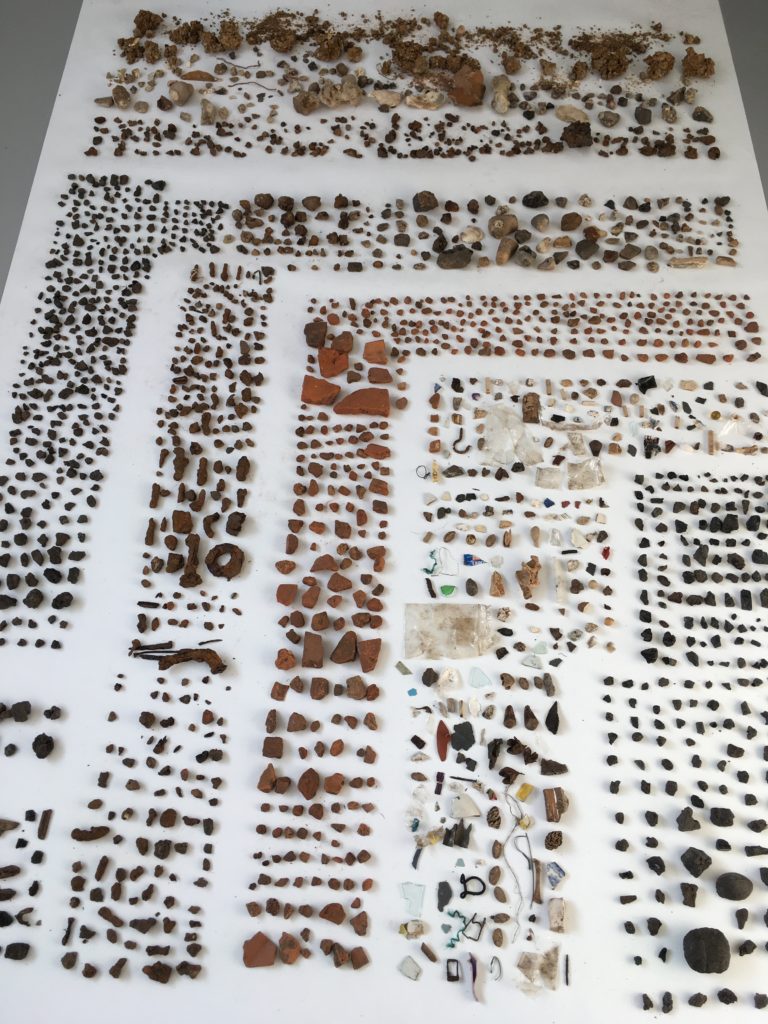Sarah Caputo Garden Archaeology
Artist Sarah Caputo spent the week of 21st January 2019 on a garden archaeology project, which she originally named Project GRTF99413. She aimed to lay out finds from a metre cube test pit from her garden. Sarah began the project as an experiment, asking if she could use the gallery while it was closed. She was keen to see what the finds would look like laid out in order. It turned out to be much more fascinating than we ever expected. Much to our surprise, we could see so much interest and variety from earth, stones, the ordinary rubbish of ages.
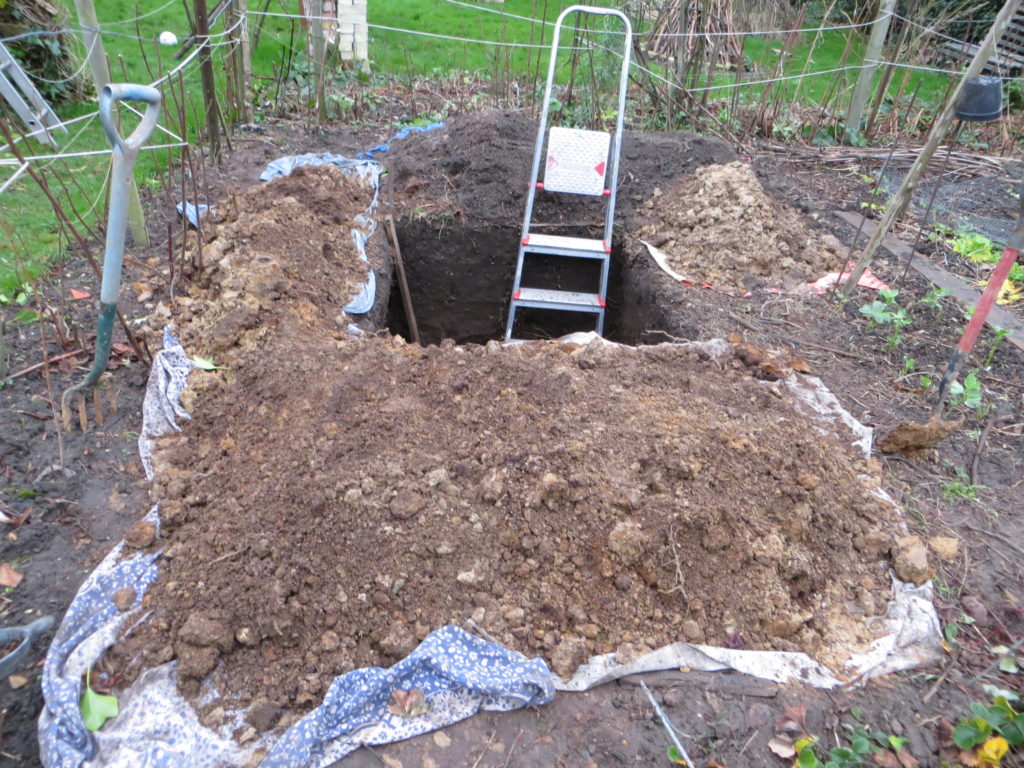
Metre cube test pits
In the course of her garden archaeology research, Sarah Caputo visited Norwich Castle Museum to meet an archaeologist who was studying the finds around Caistor Roman camp.
They discussed the value of metre cube test pits as a way of investigating both in detail and depth. For Sarah, who was curious about what she might find but not keen on an exhaustive dig, this was a good solution. She therefore decided to apply these methods of investigation to her own garden. Instead of just exploring/recording/cataloguing what was above ground, she would investigate below ground as well.
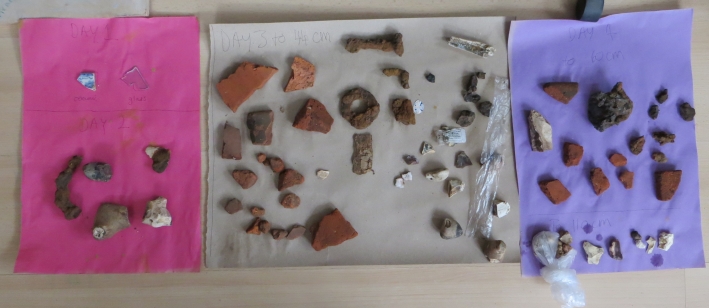
She was fascinated by the idea of taking out a metre cube from below (seemingly so solid and dense) and putting it above ground in the airy spacious atmosphere. She liked the apparent pointlessness of it and chose to treat it like a formal archaeological investigation. So, she sieved all the soil, recorded what she found at each level, took flotations and catalogued the structure of the ground beneath her feet.
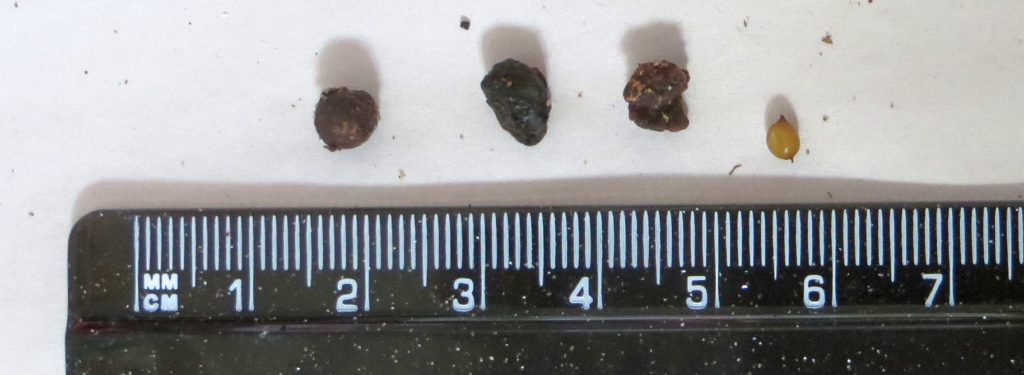
The mundane rubbish of others
Increasingly as she dug, she had an intense impression of banal everyday history. Evidence of the mundane rubbish of others lay in the first few centimetres, amongst the scattered objects and materials that she recognised as her own. Ordinary people going about ordinary lives. Further down she created an earth lined, cool, damp geometric space where she could sit and stare at the changing layers of colour. She followed roots and discovered deposits of stone, loam and conglomerate not disturbed since they were laid down thousands of years before.
In the water-drenched base she found clay to fire – here was the very stuff she had been using in her studio for so long. She had completed the circle.
The gallery display
In the clean space of the gallery Sarah Caputo laid out her finds in various different trial displays. She examined the detail, sorted out their types and played with different arrangements. One was systematic, another was in historical sequence, and the last was purely organised by aesthetics.
For her final arrangement she created a wheel-diagram-like arrangement of the finds on a white sheet on the floor. Above on the wall we projected a slide show of the process. The arrangement enhanced the beauty and importance and interest of the rows of little stones, clay, shards, glass, broken objects. They gained a sense of order from the randomness of their origins. http://www.sarahcaputo.co.uk
